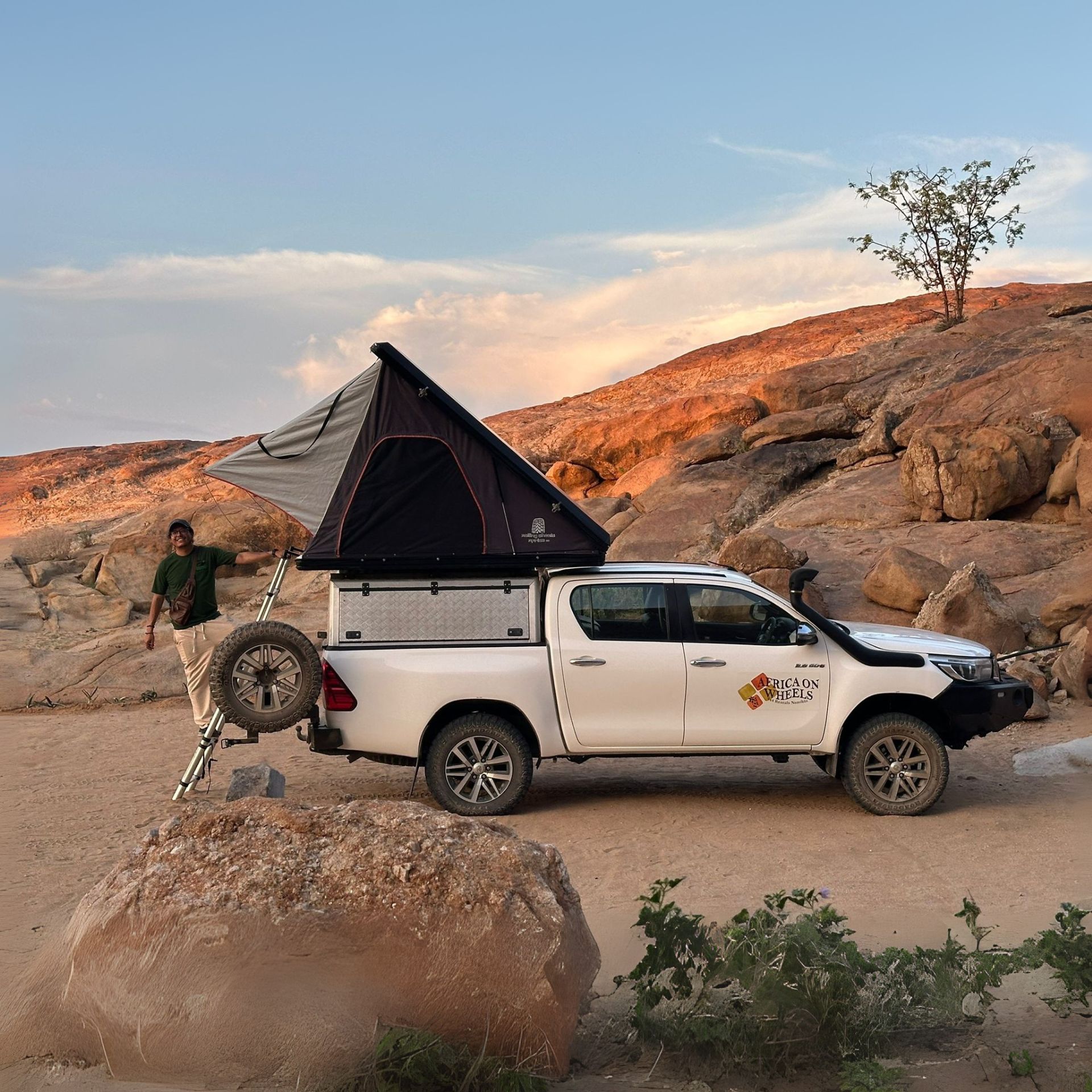Plan your Namibia road trip like a pro. Discover the complete 2025 packing list for self-driving & camping: gear, food, clothing, medicine, and insider tips.
Camping trips are always a fun experience for adventure lovers and Namibia is the right country to plan one. No matter if you go to the most remote areas of Skeleton Coast National Park, plan a self-driving safari in the outstanding Etosha National Park, or want to see the magic sunsets and gigantic dunes, preparing is key for a successful trip. From the car you are using, the rental equipment you are acquiring, or the things you need to buy at the supermarket beforehand, it is essential to keep track of everything you have and get ahead of everything you will need along the road.
Additionally, Namibia is not the place where you can get everywhere whatever you need no matter where you are. Once you leave Namibia’s capital, Windhoek, you are basically on your own, and everything that is not essential will be a difficult task to find.
Here is a guide of everything you need while doing a self-driving camping trip in Namibia
Essential Camping Gear for a Self-Drive Namibia Trip
Don’t worry. This is an easy task! Most car rental companies offer overhead tents in their 4×4 vehicle and with everything for a camping trip already included, this is by far the best option when planning a self-driving camping trip in Namibia. Most of these car rentals not only provide tents, mats, and sleeping bags, but also full camping set with pots, pans, cutlery, tables, chairs, and sometimes even salt, pepper, and oil.
If you want to make things easier for you, this is the choice to go for. Overhead tents are extremely easy to assemble (it takes 3-5 Minutes to assemble) and you simply need to keep track of everything they borrowed from you.
Additionally, you can always take with you a small pillow, a blanket for the cold nights, and a game of cards once the sun goes down.
Do you need an eSIM in Namibia?
I recommend an e-SIM with Airalo. With them, I bought a plan of 10 GB for my whole stay in the country.
NOTE: Before packing and leaving a campsite, take out their checklist (you will get a checklist with everything they borrowed from you) and count that everything is there. If you lose or break something, you will have to pay it back.
Read more: What are the best things to do in Windhoek
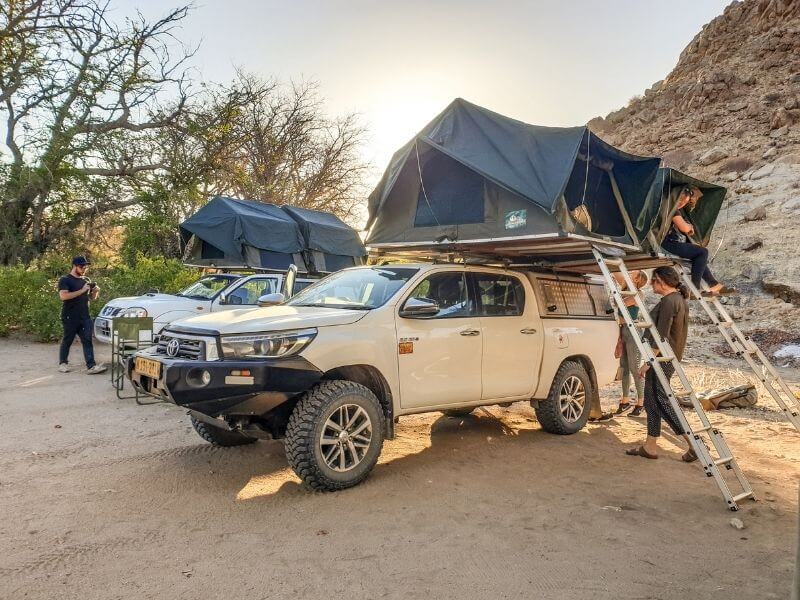
Cooking & Cleaning Tips While Road Tripping in Namibia
While all the equipment for cooking is already provided by most car rental operators, whatever you cook, you will have to bring it and whatever you use, you will have to clean it.
Some car rental companies provide cleaning items for the dishes. However, you can’t expect to this be always the case. And even though, most camping facilities have an area for cleaning where you can also get water, soap, and cleaning wipes, you always should be prepared for the worst.
NOTE: Ask your car rental company if these items are included in the vehicle. Some companies include everything you need for cleaning. This is perfect to save some money, as these are items you won’t use after your self-driving camping trip is over.
What do you need for Cooking on a road trip in Namibia
As I mentioned before, some car rental companies already include spices and oil in their vehicles. However, this is something you should confirm beforehand and buy if necessary. These are items you barely will use in your trip and easily generate costs that add up. Try to get the smallest possible option the supermarket offers, or if you already live in Namibia (or travel with a Namibian), bring them from home.
Additionally, you will need water for cooking and a small gas tank for boiling water. While this is also something most of the time is already included in the vehicles, it is never wrong to confirm this information or even take some additional gas in case one tank is not enough.
If you don’t want to use the tap water at the camping facilities (it should be totally fine), it is recommended to take at least 5 liters of water per person per day. Furthermore don’t forget that you need also 3-5 liters of drinking water every day and always remember to bring enough food for two or three meals per day – something most travelers easily miscalculate when planning a camping trip with several people for more than a few days.
Easy meals to cook on the road are pasta with tomato sauce/pesto, couscous with vegetables and different sauces, and vegetable/meat stews. On the other hand, easy breakfasts to prepare on the road are yogurt with muesli, cereal with milk, fruit salads, and sandwiches with ham and cheese.
NOTE: All car rentals with cooking equipment include a little fridge. Keep this fridge for essential products like milk, yogurt, meats, and cheese. Water and additional drinks can be left in the dark side on the back of the vehicle.
Read more: How To Plan A Self-Driving Trip In Etosha National Park
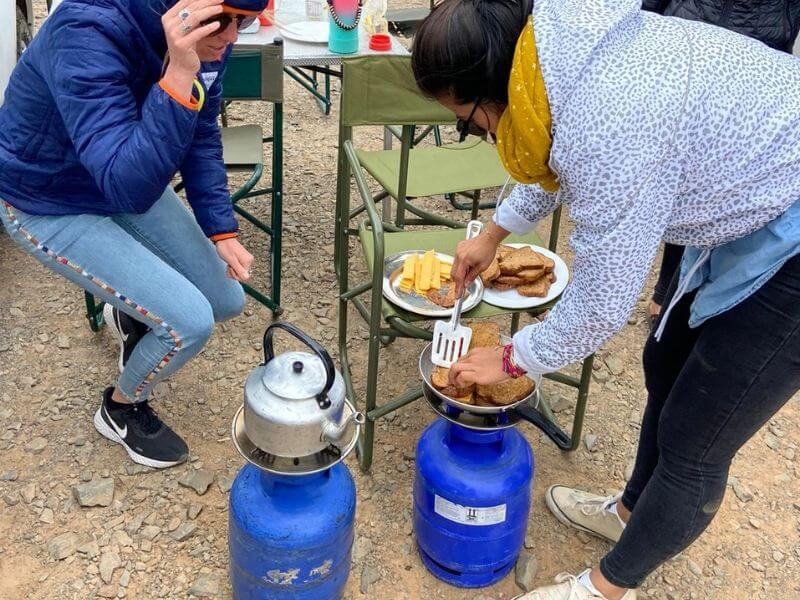
What to Wear for a Namibia Road Trip (Seasonal Packing Tips)
Packing light and practical is key to keeping everything organized and in handy. Fortunately, self-driving camping trips are mostly less than 10 nights, and packing everything in one small or medium size bag should be more than enough.
Namibia’s climate is quite dramatic in comparison to other countries. Depending on which season you travel to the country, you can have hot days with almost 40 degrees and chilly nights where a winter jacket feels to be necessary. As a rule of thumb, no matter in which season you travel to Namibia, bringing a fleece or a hiking jacket is a must.
Hiking boots can be a good plus. However, if you plan to spend most of your time doing safaris, they can be quite robust to carry all the time and rather an inconvenience when traveling. In my opinion: change the hiking boots for comfortable shoes that can get dirty.
Long and short trousers, several t-shirts and one or two shirts and some shorts for the very hot days are some of the items you need to carry with you.
INSIDER INFO: while doing a safari you might notice that most people wear khaki or light clothes. This is not a fashion trend, but more a useful tip. Safari clothes have this color so you can easily blend with the colors of the natural environment and don’t spook animals. Some people also agree that safari clothes can get dirty and you will barely notice it.
Other additional items to pack are a hat, raincoat, sunglasses, flip-flops, and a bandana. However, they are in my opinion more up to you and how light you want to travel.
Read more: What are the most unique places in Namibia
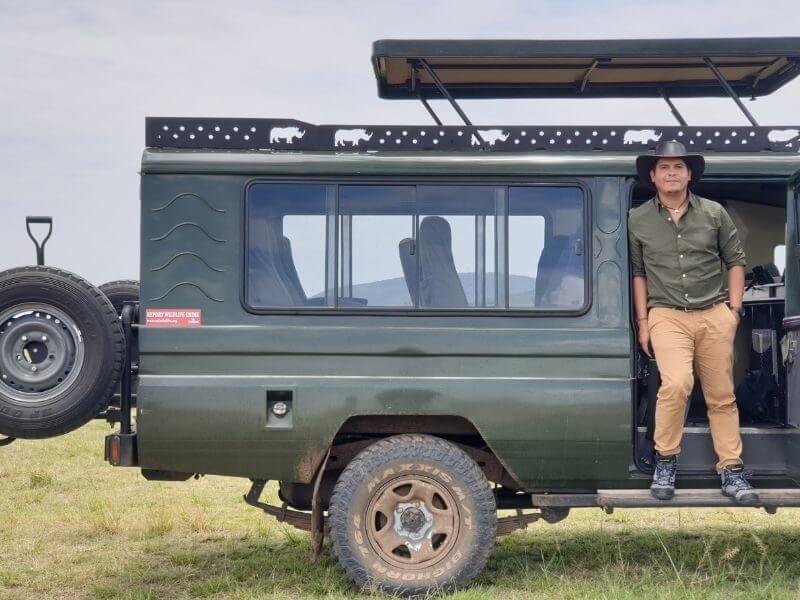
Tips on what to take for Toiletries
Unlike most places in Africa and even most places in Europe, camping facilities in Namibia are excellent. 90% of the toilets are perfectly clean, there is always toilet paper at the restrooms and liquid soap is mostly available at the campsites. Still, there is a 10% that is except for this rule and therefore is better to be prepared.
Bringing items like toilet paper, small hand towels, sanitizer, and hand soap should be a priority on your list. While standard items such as shampoo, body wash, and showering towels are also a personal must.
In all my travels I carry small plastic 100 ml containers I bought on Amazon. Here, I put all these toiletries and keep at the same time my luggage light. I end up even having space for less important items such as mouth wash, perfume, and hair gel.
Read more: How to plan a road trip in Namibia
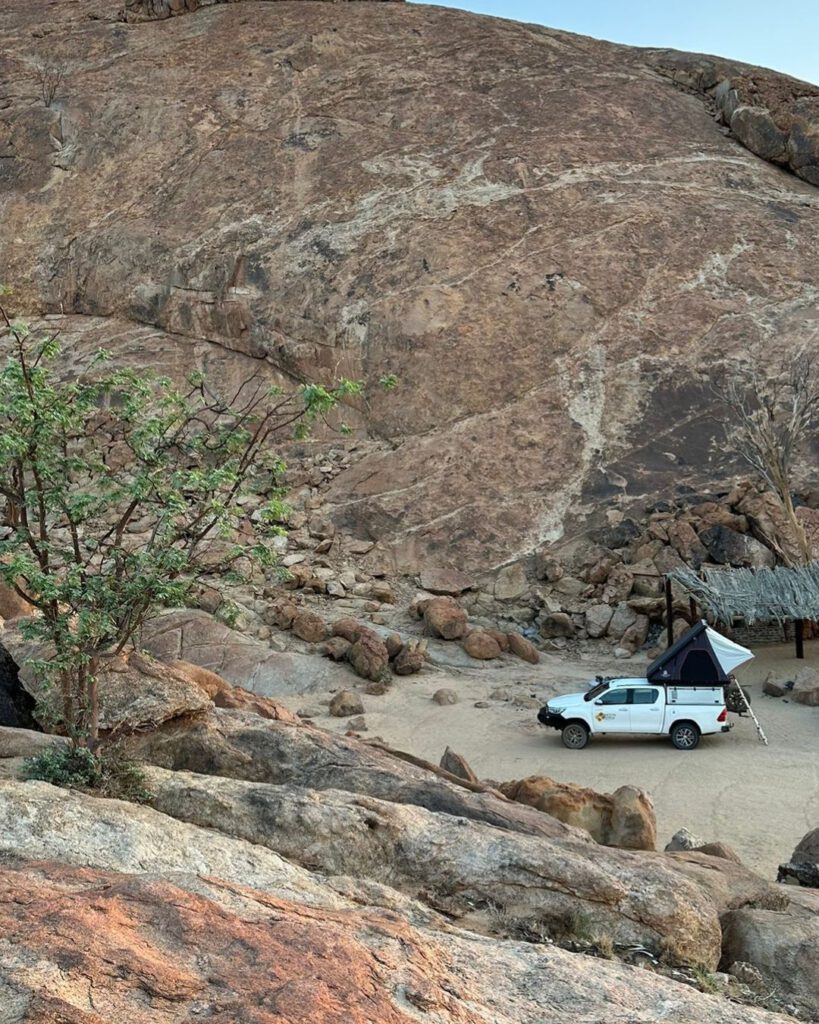
Medical Essentials for a Namibia Road Trip
Bringing a simple emergency kit can be quite handy when planning a self-driving camping trip in Namibia. Chances are very low that something bad happens to you. However, a light headache or food poisoning is always on the table.
Bringing painkillers, sleeping pills, and medicine against stomach aches can be quite handy from time to time. No matter where you go, this can be extremely handy when the worst comes.
If you are traveling to the north part of the country, malaria pills can be a lifesaver to take with you and enough mosquito repellent is obligatory.
Also, don’t forget that the sun in Namibia is way stronger than in America and Europe. Bringing sunscreen is always necessary and using it every morning before you leave should be a rule.
This is a basic packing list for medicine to take in general to southern Africa:
- Paracetamol, Ibuprofen or aspirin
- Alcohol/antibacterial gel
- Cleansing wipes
- Bandages and plasters
- Diarrhea relief and electrolyte powder
- Pills against travel sickness
- Pills against a cold
- Anti-malarial tablets
- Small pair of scissors
- Mosquito repellent
- Sunscreen
I usually carry small amounts of all of these things for trips longer than 10 days and carry them in a small travel bag – very handy and do not occupy much space.
INSIDER TIP: Now we are living in COVID times. Since then, I always carry 5 quick COVID tests. This is very handy – especially in Africa where massive testing is very limited
Read more: What are the top safari experiences in Africa
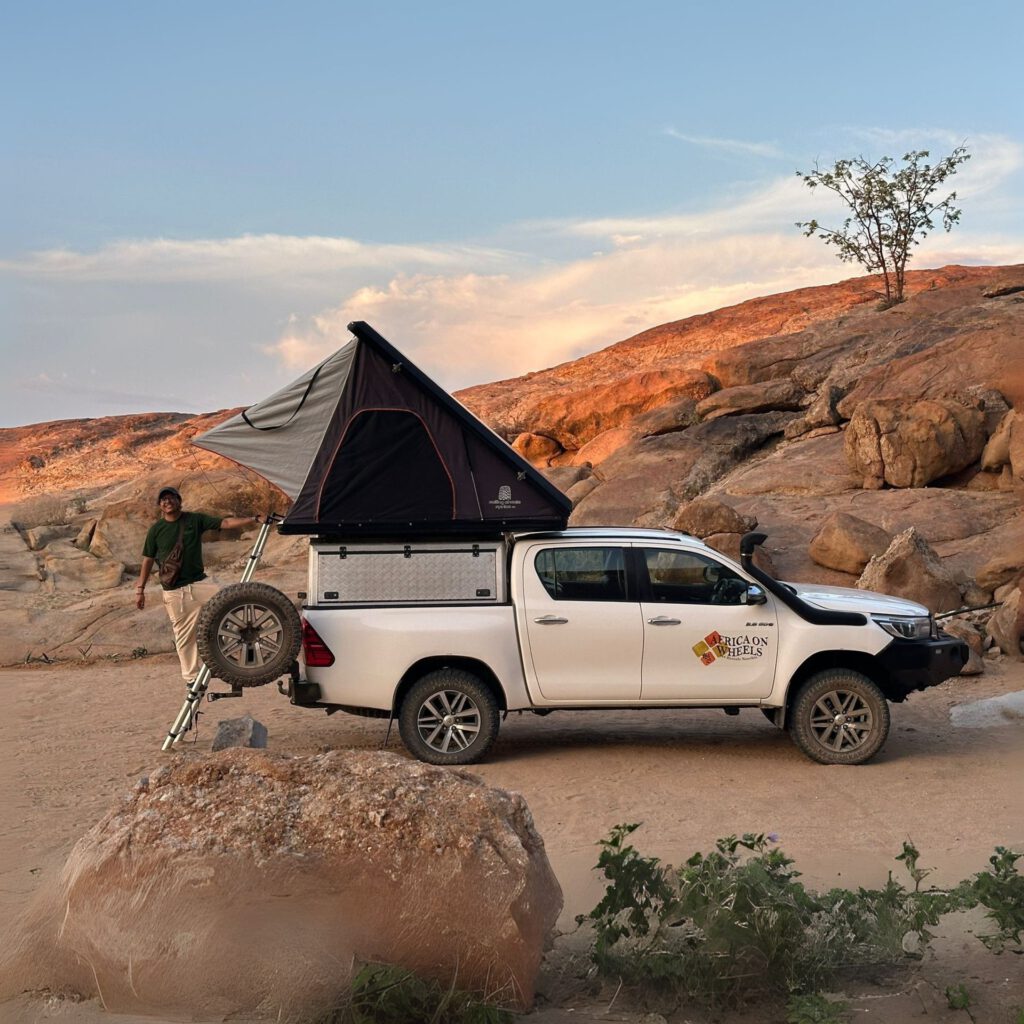
Bonus Packing Tips for Self-Driving in Namibia
Just like in any other camping trip anywhere in the world, headlamps and small lamps can be quite handy, a lighter/matches are a must, and power banks can save you in case your phone or cameras run out of energy. And finally, don’t forget to bring an adapter for the country you are traveling to, a dry towel, and some zip bags in case you need to pack something quickly.
Read more: How to plan your first safari trip
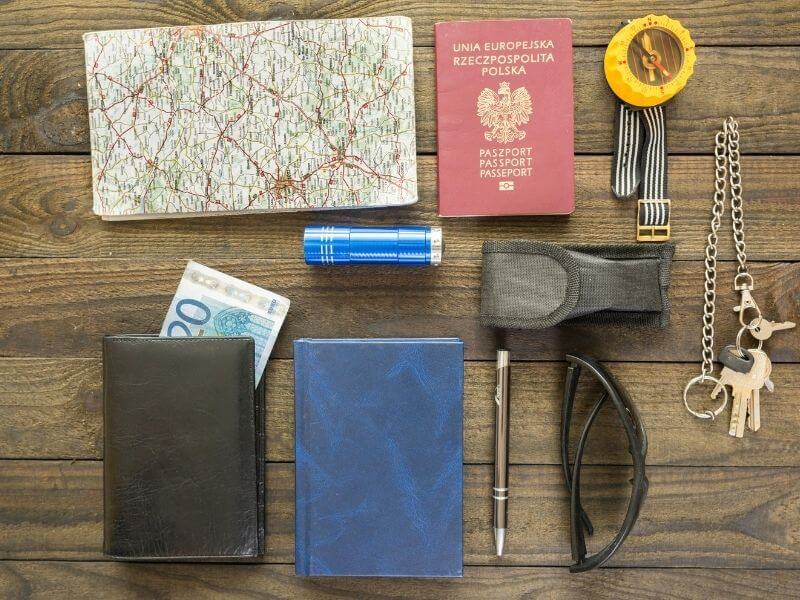
What Company Did I Use?
For my self-driving trip through Namibia, I rented my 4×4 through Africa on Wheels—and honestly, I couldn’t have been happier with the experience. From the moment I started planning, their team was responsive, super friendly, and clearly knew what they were doing. The vehicle itself was in excellent condition: fully equipped with a rooftop tent, a fridge, dual fuel tanks, and all the camping gear I needed.
What I really appreciated, though, was how they took time to walk me through everything before I hit the road—how to use the gear, how to drive on gravel, and what to expect in more remote areas. It made a big difference in how confident I felt heading out.
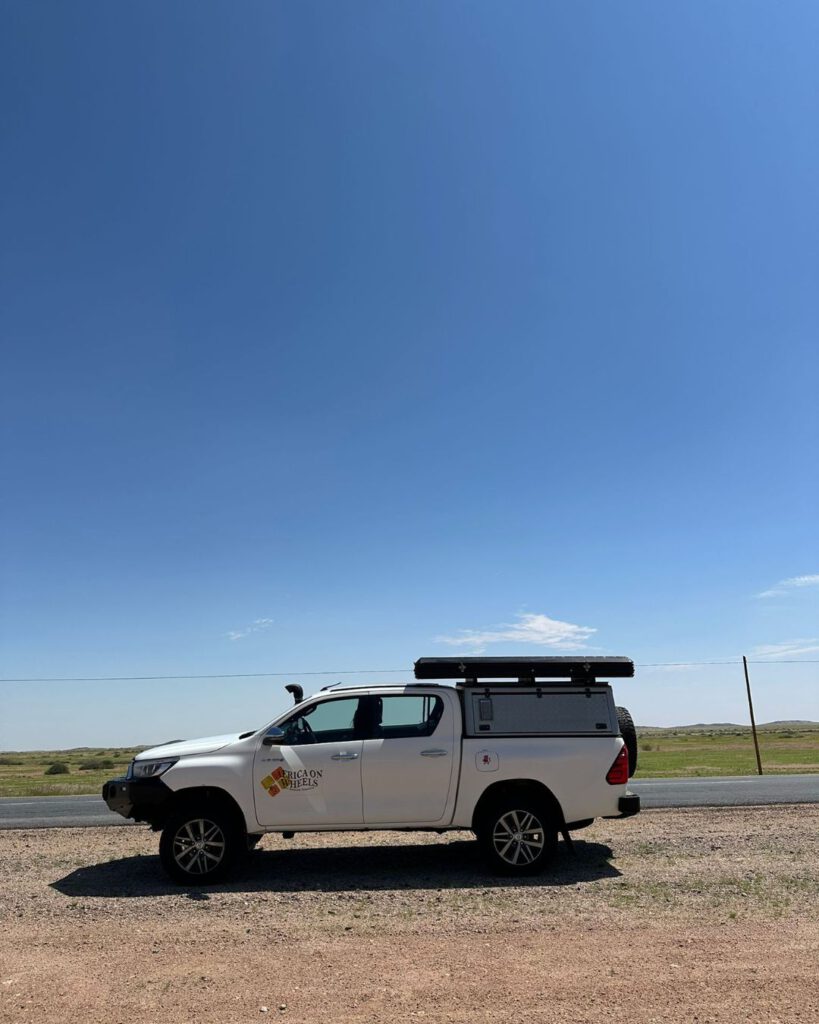
Frequently Asked Questions – Packing for a Self-Drive Trip in Namibia
1. What should I pack for a self-drive camping trip in Namibia?
You’ll need a mix of essentials: camping gear (tent, stove, cookware), food and water (at least 5L per person/day), clothing for hot days and cold nights, toiletries, and a basic medical kit. Many 4×4 rentals include rooftop tents and basic camping equipment, but always confirm what’s provided.
2. Do I need to bring my own cooking equipment for Namibia?
Most car rental companies in Namibia provide a full cooking set including pots, pans, cutlery, and sometimes even spices. However, it’s best to bring small essentials like extra gas canisters, your favorite condiments, and wet wipes for cleanup.
3. What type of clothing is best for a Namibia road trip?
Wear breathable layers during the day and bring a fleece or jacket for the evenings. Neutral-colored safari clothing is ideal for wildlife viewing. Avoid bulky gear unless you plan on hiking extensively.
4. How much water do I need to bring while driving through Namibia?
Plan for at least 5 liters per person per day—plus extra for cooking and emergency use. Water is not always available in remote areas, so stock up before leaving major towns.
5. Are toiletries necessary for Namibian campsites?
Yes. While most campsites are clean and well-stocked, it’s smart to bring your own toilet paper, soap, sanitizer, and a fast-drying towel. Use 100ml travel containers to keep your luggage light and organized.
How to plan a trip to Namibia with an agency
Planning a trip to Namibia independently is fun. However, if you want to arrange everything with tour operators beforehand from the comfort of your home. SafariBookings is the best platform for it.
They have the largest database of tour operators in Africa and you can simply send a request and negotiate a tour and a price directly with the operator. You don’t have to pay any additional fees.
These are some of the most popular tours in Namibia at SafariBookings
